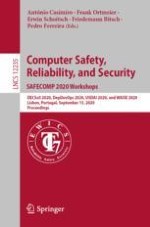2020 | OriginalPaper | Buchkapitel
Safety Concerns and Mitigation Approaches Regarding the Use of Deep Learning in Safety-Critical Perception Tasks
verfasst von : Oliver Willers, Sebastian Sudholt, Shervin Raafatnia, Stephanie Abrecht
Erschienen in: Computer Safety, Reliability, and Security. SAFECOMP 2020 Workshops
Aktivieren Sie unsere intelligente Suche, um passende Fachinhalte oder Patente zu finden.
Wählen Sie Textabschnitte aus um mit Künstlicher Intelligenz passenden Patente zu finden. powered by
Markieren Sie Textabschnitte, um KI-gestützt weitere passende Inhalte zu finden. powered by
